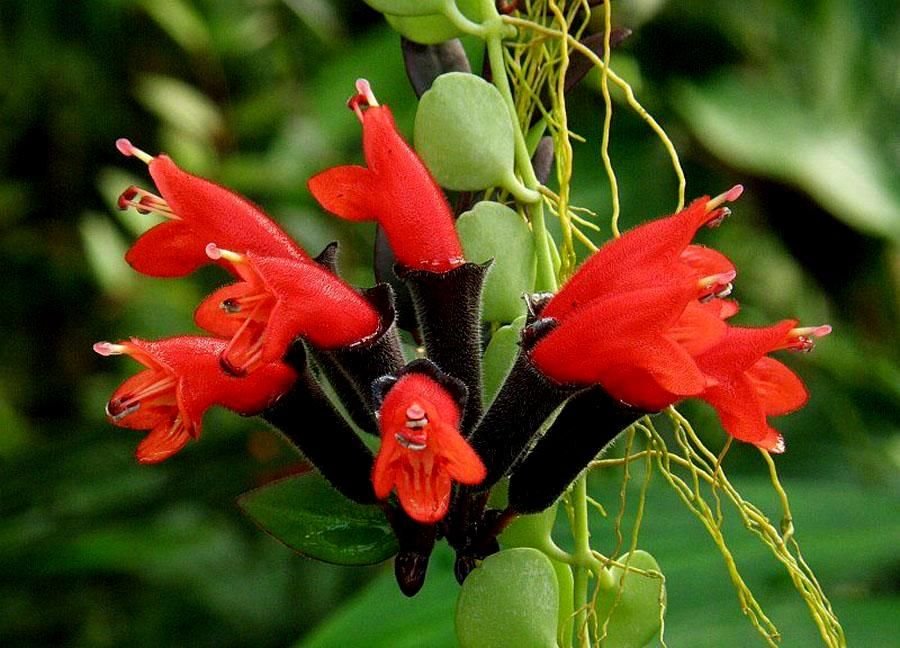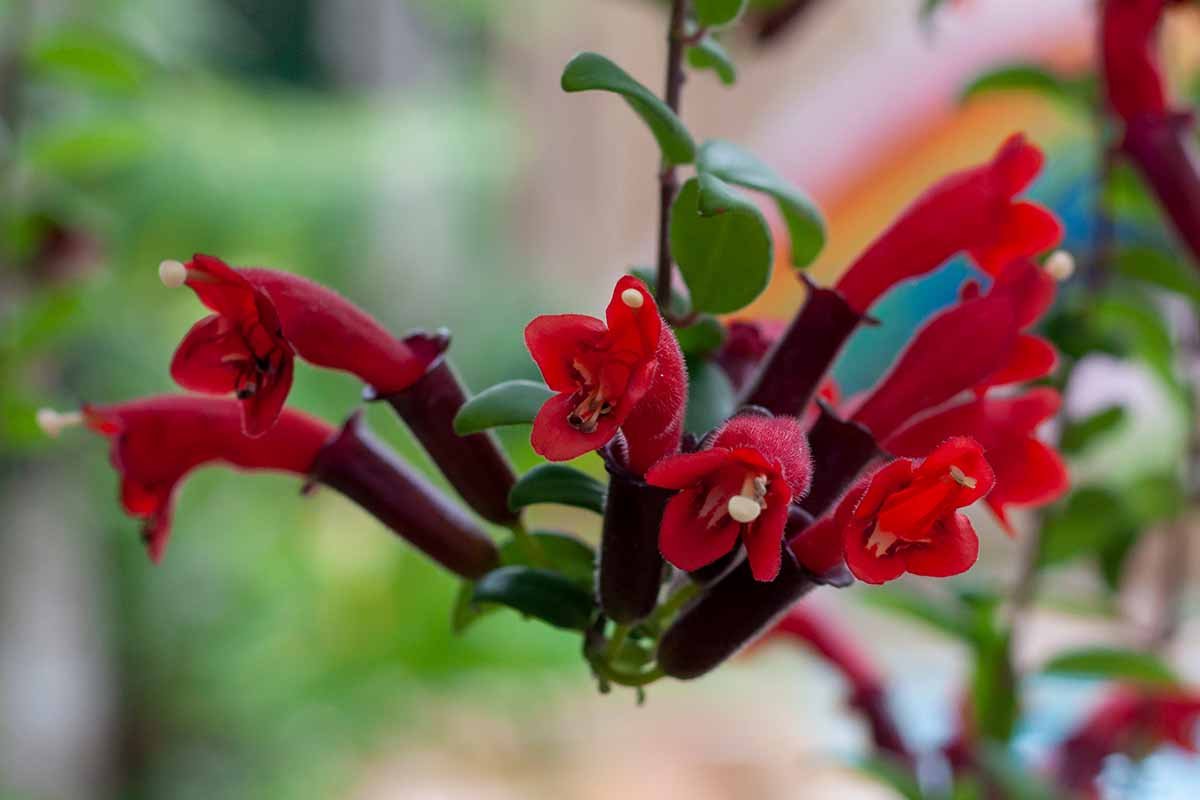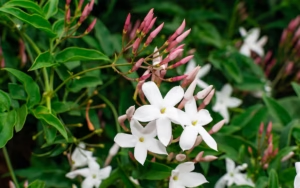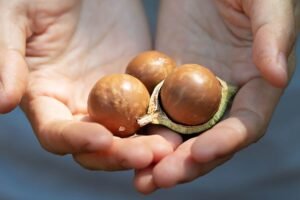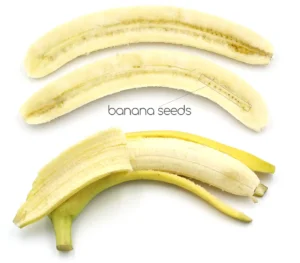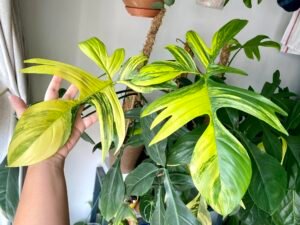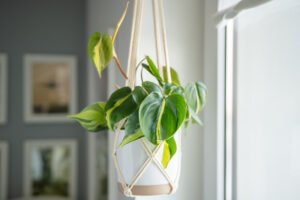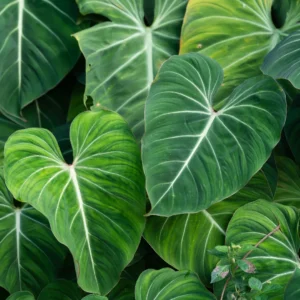The lipstick plant (Aeschynanthus radicans) is a tropical beauty beloved by houseplant enthusiasts for its cascading vines and vibrant red tubular flowers resembling lipstick tubes. Its exotic appearance makes it a favorite choice for hanging baskets and indoor gardens. With proper care, this striking plant can thrive and bloom year-round, adding a splash of color to your space.
Lipstick Plant Quick Reference Table
| Common Name | Lipstick Plant |
|---|---|
| Botanical Name | Aeschynanthus radicans |
| Family | Gesneriaceae |
| Plant Type | Perennial, Vine, Indoor plant |
| Mature Size | 1–2 feet long (trailing) |
| Sun Exposure | Bright, indirect light |
| Soil Type | Well-draining, light potting mix |
| Soil pH | Slightly acidic to neutral (6.0–7.0) |
| Hardiness Zones | 10–11 (USDA); typically grown indoors |
| Native Area | Southeast Asia |
| Toxicity | Non-toxic to humans and pets |
Planting and Transplanting Lipstick Plant
Choosing the Right Location
The lipstick plant thrives in warm, humid environments. Indoors, place it near a window with bright, indirect light. Avoid direct sunlight as it can scorch the leaves. If growing outdoors in tropical regions, choose a sheltered spot with filtered light.
Planting Tips
- Pot Selection: Choose a hanging basket or a container with drainage holes to prevent waterlogging.
- Soil Requirements: Use a lightweight, well-draining potting mix, preferably one formulated for epiphytic plants or orchids.
- Humidity Setup: To mimic the plant’s natural tropical habitat, consider placing a humidity tray or using a humidifier nearby.
Transplanting
Transplant lipstick plants when they outgrow their pots or when the soil becomes compacted.
- Step 1: Gently remove the plant from its pot, shaking off excess soil.
- Step 2: Check the roots for rot or overcrowding and trim any damaged sections.
- Step 3: Replant into a slightly larger pot with fresh potting mix.
Lipstick Plant Care
Caring for lipstick plants involves providing the right balance of light, water, and nutrients. Here’s a breakdown:
Light Requirements
Lipstick plants need bright, indirect sunlight. Lack of light can lead to sparse growth and fewer blooms. If natural light is insufficient, use grow lights to supplement.
Watering
Keep the soil evenly moist but not soggy.
- Frequency: Water when the top inch of soil feels dry.
- Method: Water thoroughly and allow excess water to drain out of the pot.
Humidity
Lipstick plants prefer high humidity levels (50–60%). Increase humidity by misting the plant, grouping it with other plants, or using a pebble tray.
Temperature
Maintain temperatures between 65°F and 75°F (18°C–24°C). Avoid cold drafts and sudden temperature changes, which can stress the plant.
Fertilizing
Feed the lipstick plant with a balanced, water-soluble fertilizer every 4–6 weeks during the growing season (spring and summer). Reduce feeding during fall and winter.
Types of Lipstick Plant
There are several varieties of lipstick plants, each with unique features. Here are a few popular ones:
- Aeschynanthus radicans: The classic variety with vibrant red flowers.
- Aeschynanthus lobbianus: Known for its smaller leaves and deep red blooms.
- Aeschynanthus longicaulis: Features patterned foliage and orange-red flowers.
- Aeschynanthus ‘Mona Lisa’: A cultivar with larger, showier flowers.
Pruning
Pruning helps maintain the plant’s shape and encourages healthy growth.
How to Prune
- Remove Dead Leaves: Trim away yellow or wilted leaves to prevent disease.
- Shape the Plant: Use sterilized scissors to cut back leggy or overgrown stems.
- Encourage Bushiness: Pinch back the tips of vines to promote fuller growth.
Prune regularly during the growing season but avoid heavy pruning in fall or winter when the plant is dormant.
Propagating Lipstick Plant
Lipstick plants are easy to propagate through stem cuttings.
Steps to Propagate
- Take a Cutting: Choose a healthy stem with 2–3 nodes and cut just below a node.
- Rooting Medium: Place the cutting in water or a well-draining potting mix.
- Provide Humidity: Cover the cutting with a plastic bag to maintain moisture.
- Wait for Roots: Roots typically develop in 3–4 weeks. Once rooted, transplant the cutting into a small pot.
Potting and Repotting Lipstick Plant
Lipstick plants benefit from occasional repotting to refresh the soil and accommodate growth.
When to Repot
- Every 2–3 years or when the plant outgrows its pot.
- Signs include roots growing out of the drainage holes or compacted soil.
How to Repot
- Remove the plant from its pot and gently loosen the roots.
- Replant in fresh potting mix in a slightly larger container.
- Water thoroughly and place the plant in its usual location.
Overwintering
In colder climates, lipstick plants need extra care during winter.
Indoor Care
- Keep the plant away from cold drafts and heaters.
- Reduce watering as the plant’s growth slows down.
- Maintain humidity levels with a humidifier or pebble tray.
Outdoor Care
If grown outdoors, move the plant indoors before the first frost.
Common Problems With Lipstick Plant
Lipstick plants are relatively low-maintenance but can face some challenges.
Drooping Leaves
- Cause: Overwatering or underwatering.
- Solution: Adjust your watering routine.
Yellowing Leaves
- Cause: Poor drainage, nutrient deficiency, or too much direct sunlight.
- Solution: Improve soil drainage and move the plant to indirect light.
Common Pests & Plant Diseases
Pests
- Spider Mites: Cause webbing and stippled leaves. Treat with insecticidal soap.
- Mealybugs: Appear as white cottony masses. Remove with a cotton swab dipped in alcohol.
Diseases
- Root Rot: Caused by overwatering or poorly draining soil. Repot the plant with fresh soil and cut away affected roots.
- Leaf Spot: Fungal infections can cause brown spots on leaves. Remove infected leaves and improve air circulation.
How to Get Lipstick Plant to Bloom
Lipstick plants can be finicky bloomers. To encourage flowers:
- Provide Ample Light: Ensure the plant gets bright, indirect sunlight.
- Fertilize Properly: Use a high-phosphorus fertilizer during the growing season.
- Prune Regularly: Remove old flowers and leggy growth.
- Maintain Consistent Conditions: Avoid sudden changes in light, temperature, or humidity.
FAQ
1. Can I grow a lipstick plant outdoors?
Yes, in USDA zones 10–11. In cooler regions, grow it as an indoor plant.
2. How often should I water my lipstick plant?
Water when the top inch of soil feels dry. This usually means once a week, but it may vary depending on humidity and light levels.
3. Why are my lipstick plant’s leaves turning yellow?
Yellow leaves can result from overwatering, poor drainage, or excessive sunlight. Address these factors to improve the plant’s health.
4. How long does it take for a lipstick plant cutting to root?
Typically, 3–4 weeks when kept in a humid environment.
5. Is the lipstick plant toxic to pets?
No, the lipstick plant is non-toxic to humans and pets, making it a safe choice for homes with animals or children.
Read more: How to Grow and Care for Monstera Adansonii

